 May 7, 2020 John E. Ross, KD8IDJ, Editor
| ||||||
COVID-19 Impact & News Find the latest news and information on the impact of the coronavirus pandemic to ARRL members and our global amateur radio community. FCC Providing Flexibility to Volunteer Examiners in Developing Remote Testing Methods In response to questions from the amateur radio community, the FCC has clarified that nothing in its rules prohibits remote amateur radio testing, and no prior approval is needed to conduct remote exam sessions. "The Commission provides flexibility to volunteer examiners and coordinators who wish to develop remote testing methods or to increase remote testing programs already in place," the FCC said in an April 30 news release. "We recognize that some volunteer examiner coordinators may not have the immediate capacity for widespread In a tweet the next day, FCC Chairman Ajit Pai called the announcement "Good news for aspiring amateur radio operators." The FCC opened the door to remotely administered examinations in a June 5, 2014, FCC Report and Order, noting that, since the VE system was established, "remote testing methods have been developed, including audio and video links, either hard-wired to a site or available through internet or satellite technologies, which would allow a VE team to observe an examinee from afar." The FCC ruled that allowing VEs and VECs the option of administering examinations remotely was warranted. The FCC declined to incorporate any specific requirements or conditions for remote testing into the rules, and made it clear that VECs and VEs were not required to offer remote testing. ARRL Volunteer Examiner Coordinator Manager Maria Somma, AB1FM, said she's gratified to see that the FCC appreciates the need for remote testing. "Many of our VEs and VE teams have been employing remotely proctored exam sessions with both video and in-person components, and following social-distancing protocols, where necessary," she said. "Some ARRL VE teams have shown great promise in administering exams remotely." Somma also said that as states begin to lift restrictions, the possibility exists to restart in-person amateur radio exam opportunities. "We urge our VE teams to keep up to date so they can make informed decisions based on local community guidelines, as each community is unique," she said. "Our volunteers should use their best judgement when deciding whether or not to begin conducting in-person exam sessions. It is important to us that you feel confident when choosing your course of action, because the health and safety of our VEs and the examinees is the top priority. VE teams that choose to conduct in-person sessions should restart consistent with local restrictions and guidelines." To find amateur radio license exam sessions in your area, visit the ARRL website. Candidates should verify with their VE teams that the exam session is being held and if any special procedures are required to attend. Socially Distanced In-Person Exam Sessions Held in US and Norway With some states starting to relax restrictions on events and activities, the Grant County, Oregon, Amateur Radio Emergency Service (ARES®) held an in-person exam session on April 26 in the town of John Day that adhered to social distancing recommendations.
Exam organizers held the gathering to within Oregon's 10-person limit for gatherings, keeping everyone 6 feet apart and requiring all participants to wear face masks. The exam session was held outdoors under a car port. "We had an exceptionally successful test session with candidates passing exams at every amateur radio level," said Ed Ellesson, AF7YX, the ARRL Volunteer Examiner Liaison for the Grant County Amateur Radio Club. Grant County Emergency Coordinator Steve Fletcher, K7AA, noted that many clubs had canceled their planned sessions due to the coronavirus pandemic. "Grant County decided to approach the problem by obeying all the restrictions but still holding the exam," he said. "As a result, we had people come here from all over the state." In Oklahoma, the Mid-Del Amateur Radio Club, W5MWC, administered an open-air exam session on April 25 that held to social distancing guidelines. Over the course of the 3-hour session, 16 candidates tested, and all were successful. One candidate passed all three exam elements to come away with his Amateur Extra-class license. Another open-air amateur exam session took place recently in Norway. The LA3F radio amateur club, south of Oslo, had just completed its annual course for prospective radio amateurs, and three candidates were ready to take their exam when Norway began shutting down activities and gatherings due to the coronavirus pandemic.
Not to be deterred, International Amateur Radio Union Vice President Ole Garpestad, LA2RR, arranged with Norwegian regulatory authorities to hold an outdoor exam session compatible with social distancing and other safety guidelines in place. Garpestad met with the three candidates in the forest outside a local scout cottage, and, with candidates seated at tables at least 5 meters (about 16 feet) apart, he administered the exam. With the temperature at around 10 °C (about 50 °F), everyone dressed warmly. Garpestad reported that all three candidates passed, and LA5EUA, LB8QI, and LB8RI were welcomed to the world of amateur radio. -- Thanks to Steve Fletcher, K7AA, and Don Beattie, G3BJ, via IARU Region 1 NASA CubeSat Array to Study Causes of Giant Solar Particle Storms A new NASA mission making use of a half-dozen CubeSats will study how the sun generates and releases giant space weather storms -- known as solar particle storms -- into planetary space. "Not only will such information improve understanding of how our solar system works, but it ultimately can help protect astronauts traveling to the moon and Mars by providing better information on how the sun's radiation affects the space environment they must travel through," NASA said of the new Sun Radio Interferometer Space Experiment
(SunRISE) project. The mission will involve an array of six CubeSats operating as one very large radio telescope. NASA has awarded $62.6 million to design, build, and launch SunRISE as early as mid-2023. NASA chose SunRISE in August 2017 as one of two Mission of Opportunity proposals to conduct an 11-month mission concept study. In February 2019, the agency approved a continued formulation study of the mission for an additional year. SunRISE is led by Justin Kasper at the University of Michigan in Ann Arbor and managed by NASA's Jet Propulsion Laboratory (JPL) in Pasadena, California. "We are so pleased to add a new mission to our fleet of spacecraft that help us better understand the sun, as well as how our star influences the space environment between planets," said Nicola Fox, director of NASA's Heliophysics Division. "The more we know about how the Sun erupts with space weather events, the more we can mitigate their effects on spacecraft and astronauts." The six solar-powered CubeSats will simultaneously observe radio images of low-frequency emissions (0.1 - 25 MHz) from solar activity and share them via NASA's Deep Space Network. The constellation of CubeSats would fly within 6 miles of each other. The CubeSats will create 3D maps to pinpoint where giant particle bursts originate on the Sun and how they evolve as they expand outward into space. This, in turn, will help determine what initiates and accelerates these giant jets of radiation. The six individual spacecraft will also work together to map -- for the first time -- the pattern of magnetic field lines reaching from the sun out into interplanetary space. NASA's Missions of Opportunity pair new, relatively inexpensive missions with previously approved host launches. ARRL Podcasts Schedule
The latest episode of the Eclectic Tech podcast (Episode 7) debuts Thursday, with a discussion of HF aeronautical radio, the NCDXF beacon The On the Air and Eclectic Tech podcasts are sponsored by Icom. Both podcasts are available on iTunes (iOS) and Stitcher (Android) as well as on Blubrry -- On the Air | Eclectic Tech. May/June Issue of ARRL's On the Air Magazine Now Available The May/June digital edition of ARRL's On the Air magazine is now
...and much more! You can also read the issue on your Apple, Android, or Kindle device by using the ARRL Magazines app. The K7RA Solar Update Tad Cook, K7RA, Seattle, reports: We haven't seen a sunspot since Thursday, April 30, when the daily sunspot number was 35 -- a relatively high sunspot number. In fact, the daily sunspot number has not been that high since March 21, 2019, when it hit 49. Prior to that, we'd need to look back to June 22, 2018, when the daily sunspot number was 41. This, and the fact that last week's sunspots showed new Solar Cycle 25 polarity, gives me reason for optimism. I expect solar activity to increase, and with it HF propagation. The average daily sunspot number for last week was 5, down from 8.7 the previous 7 days. The average daily solar flux rose from 69.2 to Predicted solar flux over the next 45 days is 70 from May 7 until June 20. The predicted planetary A index is 5 on May 7 - 11; 8 on May 12; 5 on May 13 - 17; 10 and 8 on May 18 - 19; 5 on May 20 - 23; 8 on May 24 - 27; 5 on May 28 - 30; 8, 10, and 8 on May 31 - June 2; 5 on June 3 - 13; 10 and 8 on June 14 - 15, and 5 on June 16 - 20. So, there you have it: A nice steady solar flux above the 60s for the next month and a half, and stable geomagnetic conditions too. In this week's bulletin, expect a report from Jon Jones, N0JK, concerning his 6-meter MSK144 mode contacts during the recent meteor shower. Sunspot numbers for April 30 through May 6 were 35, 0, 0, 0, 0, 0, and 0, for a mean of 5. The 10.7-centimeter flux was 69.8, 70.2, 69.2, 68.7, 69.3, 69.3, and 69.8, with a mean of 69.5. Estimated planetary A indices were 2, 6, 5, 5, 6, 6, and 6, with a mean of 5.1. Middle latitude A index was 1, 5, 3, 5, 8, 7, and 6, with a mean of 5. A comprehensive K7RA Solar Update is posted Fridays on the ARRL website. For more information concerning radio propagation, visit the ARRL Technical Information Service, read "What the Numbers Mean...," and check out K9LA's Propagation Page. A propagation bulletin archive is available. Monthly charts offer propagation projections between the US and a dozen DX locations. Share your reports and observations. Just Ahead in Radiosport
See the ARRL Contest Calendar for more information. For in-depth reporting on amateur radio contesting, subscribe to The ARRL Contest Update via your ARRL member profile email preferences. IARU Region 2 Online Emergency Communication Workshops Under Way International Amateur Radio Union Region 2 (IARU R2) virtual emergency communication workshops got under way on April 29, when the first of the programs in English and Spanish, "What is Winlink and its Importance during Emergency Communications," was presented in Spanish. Workshop presenter Alfonso Tamez, XE2O, of the Mexican Federation of Radio Amateurs, offered insights into the Signups for the workshops have been brisk, with more than 180 participants from at least 18 IARU Region 2 countries registered. A question-and-answer session followed the formal April 29 presentation, conducted using the Zoom web-conferencing platform as well as through IARU Region 2's YouTube Workshops channel. The workshops are free of charge. Workshop participants expressed their satisfaction as well as a desire to continue with more workshops as soon as possible. An English-language presentation of the same workshop took place on May 6. Signing up for future workshops must be done online and not via email. The IARU-R2 Executive Committee appointed Augusto Gabaldoni, OA4DOH, as workshops coordinator to set up processes for the initial group of workshop sessions and to develop and manage ongoing workshops for radio amateurs in IARU-R2. Here is the schedule for the remaining workshops:
Contact Gabaldoni with requests for future workshop topics, volunteer speakers, or other comments or suggestions. Russian DOSAAF-85 (RS-44) Amateur Radio Satellite Transponder Now Active The amateur radio linear transponder (SSB/CW) on the Russian DOSAAF-85 (RS-44) has been activated. Dmitry Pashkov, R4UAB, explains that RS-85 is a small scientific satellite built by specialists at Information Satellite Systems and students at Siberian State Aerospace University (SibSAU). The satellite's name commemorates the 85th anniversary of the Voluntary Society for the Assistance to the This is the third satellite created by the specialists of ISS-Reshetnev and is based on the Yubileyniy platform, which features a hexagonal prism structure with body-mounted solar cells. It was launched into orbit last December 26 from the Plesetsk Cosmodrome and is in an elliptical orbit with a perigee of 1,175 kilometers (729 miles), an apogee of 1,511 kilometers (937 miles), and an inclination of 82.5°. Transmitter power is 5 W, and the beacon is on 435.605 MHz (identifying as RS-44). The transponder is inverting, with uplink centered at 145.965 MHz ±30 kHz, and downlink centered at 435.640 MHz ±30 kHz. Logbook of The World (LoTW) accepts DOSAAF-85 contacts under "RS-44." Announcements
Top Band Stalwart Herb Schoenbohm, KV4FZ, SK A fixture on 160 meters, Herb Schoenbohm, KV4FZ, of Christiansted, Virgin Islands, died on April 29. An ARRL member, he was 84. Licensed in 1954 as W0VXO, Schoenbohm became KV4FZ after relocating to the US Virgin Islands to further his career as a sales representative for broadcast equipment manufacturers on the international market, primarily in Latin America. A regular participant in 160-meter contests, Schoenbohm -- especially during his early years in the Virgin Islands -- provided many DXers with a new DXCC entity, as that band opened up to routine operation in the wake of government restrictions to protect the LORAN navigation system in that region of the spectrum. Schoenbohm was among the first top-band operators to earn DXCC on 160 meters, and his signal frequently served as a beacon from the Caribbean during Schoenbohm ran afoul of the FCC in 1994, when the Commission designated his license renewal application for a hearing following a 1992 felony conviction on federal fraud charges. The FCC subsequently denied his renewal in 1998, the US Appeals Court upheld the decision in 2000, and the US Supreme Court declined to hear the case later that same year. He applied for a new license in 2001, and an FCC Administrative Law Judge cleared the way for Schoenbohm's return to ham radio. Schoenbohm was active in Republican Party politics, representing the US Virgin Islands at the Republican National Convention from 1980 until 2012, and serving as a member of the Platform Committee in 2008 and 2012. He retired following a 30-year career working for the government of the US Virgin Islands. In Brief...
Getting It Right! The number of participants was not correctly stated in the news article "Frequency Measuring Test Results Posted," in the April 30 edition of The ARRL Letter. The article should have reflected that 140 individuals took part, and 98 of them submitted readings for both the 80- and 40-meter frequencies to better than 1 ppm. Upcoming ARRL Section, State, and Division Conventions Note: Many conventions and hamfests have been canceled or postponed due to the coronavirus pandemic. Check the calendar of canceled events on the ARRL website.
Find conventions and hamfests in your area.
. .
Subscribe to...
Free of charge to ARRL members...
| ||||||
.jpg) remote testing. We expect those volunteer examiner coordinators with limited remote testing capacity to work closely with those requesting such testing to prioritize any available remote testing slots."
remote testing. We expect those volunteer examiner coordinators with limited remote testing capacity to work closely with those requesting such testing to prioritize any available remote testing slots.".jpg)
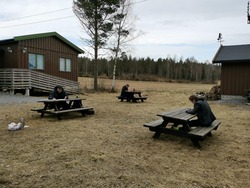

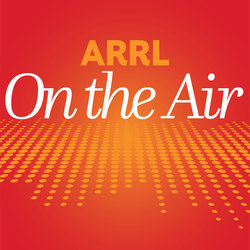 The latest episode of the On the Air podcast (Episode 4) focuses on how to create a family emergency communications plan and includes an interview with Dino Papas, KL0S, about attaching coaxial connectors with crimping tools.
The latest episode of the On the Air podcast (Episode 4) focuses on how to create a family emergency communications plan and includes an interview with Dino Papas, KL0S, about attaching coaxial connectors with crimping tools. system, SpaceX's new Starlink satellites, and "Folding@home," a system that uses distributed computing to search for a COVID-19 cure (among other things).
system, SpaceX's new Starlink satellites, and "Folding@home," a system that uses distributed computing to search for a COVID-19 cure (among other things).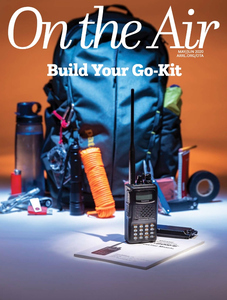 available. Read it and other ARRL digital publications by browsing to the
available. Read it and other ARRL digital publications by browsing to the 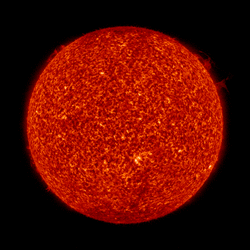 69.5. The average daily planetary A index declined from 5.6 to 5.1, and average middle latitude A index slipped from 5.1 to 5.
69.5. The average daily planetary A index declined from 5.6 to 5.1, and average middle latitude A index slipped from 5.1 to 5..JPG) usefulness and application of WinLink during emergencies, based on his ample experience, offering participants an understanding of the importance of having such a tool available during an emergency.
usefulness and application of WinLink during emergencies, based on his ample experience, offering participants an understanding of the importance of having such a tool available during an emergency.-satellite.jpg) Army, Aviation, and Navy (DOSAAF), the organization responsible for the military training of Soviet youth.
Army, Aviation, and Navy (DOSAAF), the organization responsible for the military training of Soviet youth.
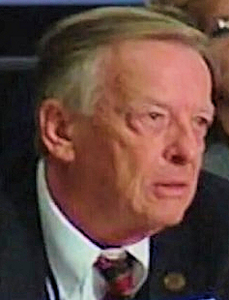 contests. He was also active in emergency communications and earned praise for his efforts during hurricane disasters affecting the Virgin Islands, receiving a Governor's Medal in 1990 for supporting communication after Hurricane Hugo.
contests. He was also active in emergency communications and earned praise for his efforts during hurricane disasters affecting the Virgin Islands, receiving a Governor's Medal in 1990 for supporting communication after Hurricane Hugo..jpg) The FCC has adopted a new official seal. The redesigned seal is the product of an agency-wide contest that solicited proposals from employees and contractors. The winning design was selected by a vote of the agency's employees and contractors. The revised design incorporates several elements: communications technologies currently transforming our world; four stars on the outer seal border, drawing from the legacy of the predecessor Federal Radio Commission seal; 18 stars on the shield, recognizing the current number of bureaus and offices, and the eagle and shield, identifying the FCC as a federal government agency. The FCC will incorporate the new seal on official stationery, business cards, publications, and other materials, including on its website and throughout its new Headquarters. Official use of the new seal will begin following completion of the agency's move to its new Headquarters. The date of the move is up in the air, delayed due to COVID-19. -- FCC news release
The FCC has adopted a new official seal. The redesigned seal is the product of an agency-wide contest that solicited proposals from employees and contractors. The winning design was selected by a vote of the agency's employees and contractors. The revised design incorporates several elements: communications technologies currently transforming our world; four stars on the outer seal border, drawing from the legacy of the predecessor Federal Radio Commission seal; 18 stars on the shield, recognizing the current number of bureaus and offices, and the eagle and shield, identifying the FCC as a federal government agency. The FCC will incorporate the new seal on official stationery, business cards, publications, and other materials, including on its website and throughout its new Headquarters. Official use of the new seal will begin following completion of the agency's move to its new Headquarters. The date of the move is up in the air, delayed due to COVID-19. -- FCC news release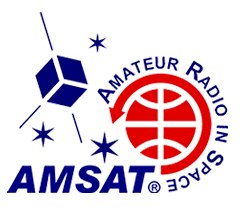 AMSAT is soliciting candidate nominations for the 2020 Board of Directors Election set for later this year. Successful candidates will fill the seats of three incumbent Directors whose 2-year terms expire in 2020: Tom Clark, K3IO; Mark Hammond, N8MH, and Bruce Paige, KK5DO. AMSAT members may further elect up to two Alternate Directors for 1-year terms. Valid Director nominations must be in writing and require either one "member-society" or five current individual members in good standing to nominate an AMSAT member. Send written nominations -- in electronic form, including email, or electronic image of a paper document -- including the nominee's name, call sign, and contact information, as well as the nominators' names, call signs, and contact information, to AMSAT Secretary
AMSAT is soliciting candidate nominations for the 2020 Board of Directors Election set for later this year. Successful candidates will fill the seats of three incumbent Directors whose 2-year terms expire in 2020: Tom Clark, K3IO; Mark Hammond, N8MH, and Bruce Paige, KK5DO. AMSAT members may further elect up to two Alternate Directors for 1-year terms. Valid Director nominations must be in writing and require either one "member-society" or five current individual members in good standing to nominate an AMSAT member. Send written nominations -- in electronic form, including email, or electronic image of a paper document -- including the nominee's name, call sign, and contact information, as well as the nominators' names, call signs, and contact information, to AMSAT Secretary .jpg) Several special event stations are on the air to mark 75 years since the end of World War II. In the UK, GB4VVV ("V for victory"), and G0SFJ will operate through May 11. Listen for GB75VET through May 28. The Guernsey Amateur Radio Society is operating GU75LIB May 6 - 12 to mark the liberation of Guernsey in World War II. The RSGB Contest Club will field special call signs GB1945PE, GB1945PJ, and GB75PEACE through May and again during August 1 - 31 to mark victory in Europe and Japan. From Norway, LI8MAI celebrates the end of World War II in Europe on May 8, 1945. Operation will continue through the end of May. From Israel, 4Z75V and 4X75V will be on the air until May 10. From Serbia, listen for YT5DP until May 31. Many Russian stations will use special prefix RP75 until May 9. The letter P stands for "pobeda," which means "victory." This is not intended to be a comprehensive list of special event stations marking the end of World War II. -- Thanks to
Several special event stations are on the air to mark 75 years since the end of World War II. In the UK, GB4VVV ("V for victory"), and G0SFJ will operate through May 11. Listen for GB75VET through May 28. The Guernsey Amateur Radio Society is operating GU75LIB May 6 - 12 to mark the liberation of Guernsey in World War II. The RSGB Contest Club will field special call signs GB1945PE, GB1945PJ, and GB75PEACE through May and again during August 1 - 31 to mark victory in Europe and Japan. From Norway, LI8MAI celebrates the end of World War II in Europe on May 8, 1945. Operation will continue through the end of May. From Israel, 4Z75V and 4X75V will be on the air until May 10. From Serbia, listen for YT5DP until May 31. Many Russian stations will use special prefix RP75 until May 9. The letter P stands for "pobeda," which means "victory." This is not intended to be a comprehensive list of special event stations marking the end of World War II. -- Thanks to .jpg) The Virginia Tech camera on AO-92 has taken stunning photos of Earth. With additional passes planned, the Virginia Tech camera onboard AO-92 (Fox-1D) has been activated on at least two passes over North America. Several photos were taken, captured by amateur stations running FoxTelem, and
The Virginia Tech camera on AO-92 has taken stunning photos of Earth. With additional passes planned, the Virginia Tech camera onboard AO-92 (Fox-1D) has been activated on at least two passes over North America. Several photos were taken, captured by amateur stations running FoxTelem, and 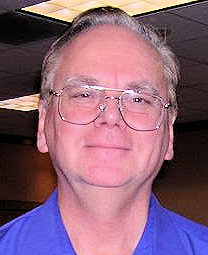 Well-Known VHF/UHF/Microwave enthusiast and mentor Dick Knadle, K2RIW, of Dix Hills, New York, has died. An ARRL Life Member, he was 80. Knadle was revered as a technical resource and mentor for the VHF/UHF/microwave community and was the 2010 ARRL Technical Achievement Award winner. His antenna and amplifier designs were widely copied. Knadle was a member of the Long Island Mobile Amateur Radio Club (LIMARC) for nearly 40 years. He held a bachelor's degree in electrical engineering for RF communications from Pratt Institute and was Senior Staff Engineer at Airborne Instrument Labs from 1964 to 2000. For many years, he served as the net control station for the Tech Net on the LIMARC repeaters.
Well-Known VHF/UHF/Microwave enthusiast and mentor Dick Knadle, K2RIW, of Dix Hills, New York, has died. An ARRL Life Member, he was 80. Knadle was revered as a technical resource and mentor for the VHF/UHF/microwave community and was the 2010 ARRL Technical Achievement Award winner. His antenna and amplifier designs were widely copied. Knadle was a member of the Long Island Mobile Amateur Radio Club (LIMARC) for nearly 40 years. He held a bachelor's degree in electrical engineering for RF communications from Pratt Institute and was Senior Staff Engineer at Airborne Instrument Labs from 1964 to 2000. For many years, he served as the net control station for the Tech Net on the LIMARC repeaters.







